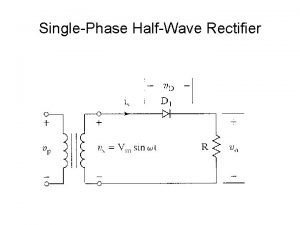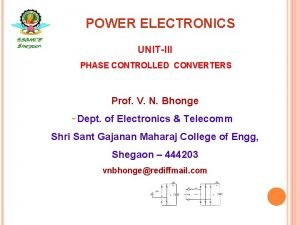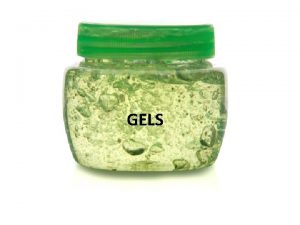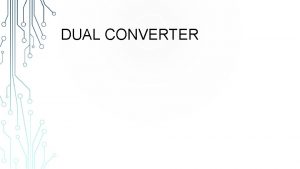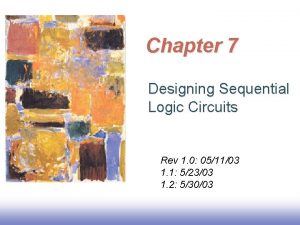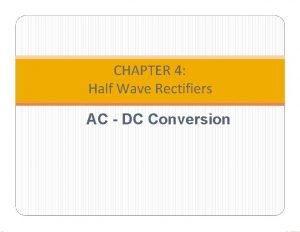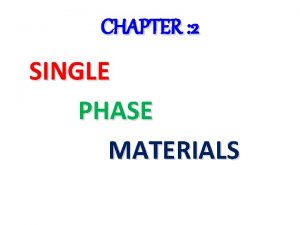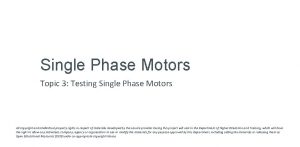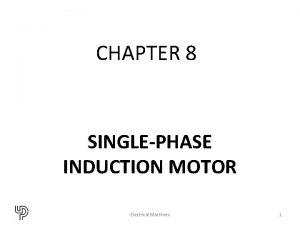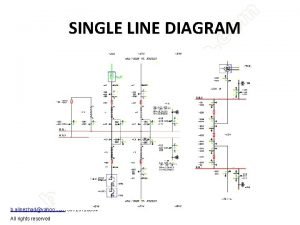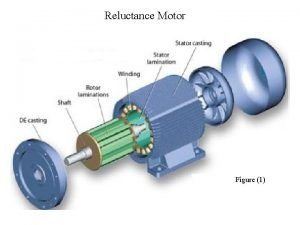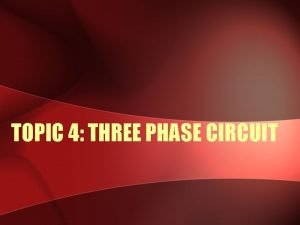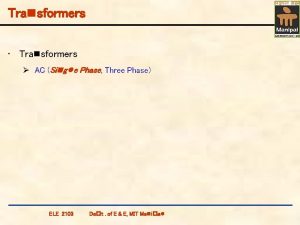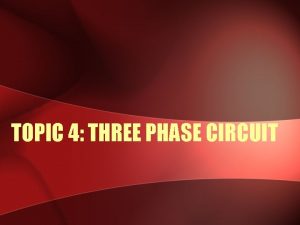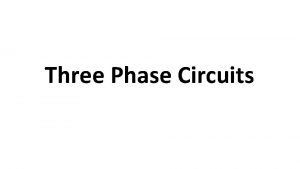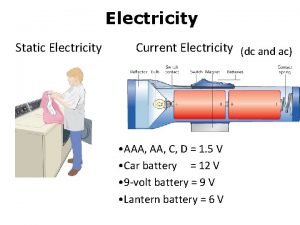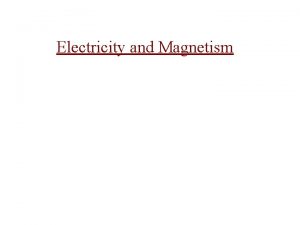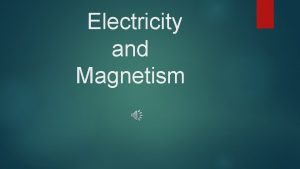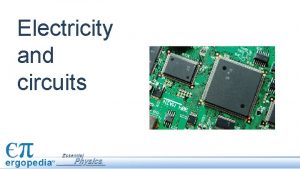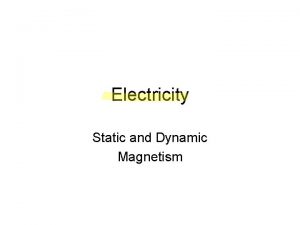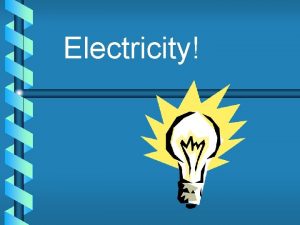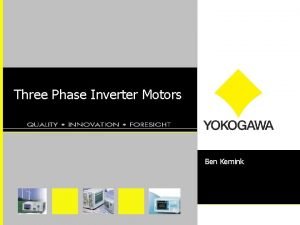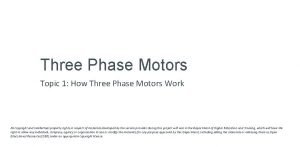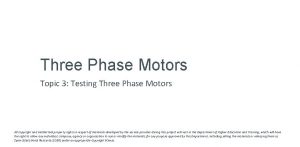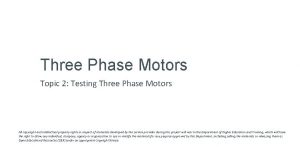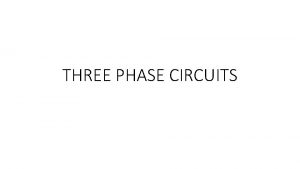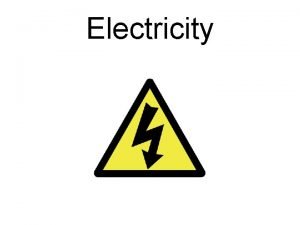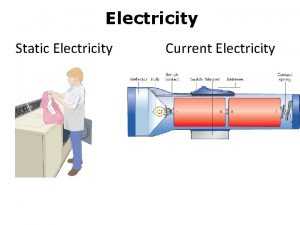WEEK 10 Single and Three Phase AC Electricity



























- Slides: 27

WEEK 10: Single and Three Phase AC Electricity Generation

Induction • Which hand is used? • What happens when: • The conductor is moved in the opposite direction? • The conductor stops moving? • The conductor is moved slowly? • Quickly?

• Conductor position in rotation vs voltage/current output

• Does it matter if the conductor is moved or the magnet is moved?

Alternating Current Generation • A simple generator consists of a loop of wire in a magnetic field • The ends of the loop are connected to brushes • Brushes and slip rings facilitate an electrical connection and current flow even though some components (brushes) must be stationary and the loop of wire (armature) must turn • The loop is rotated through the magnetic field Image Courtesy of US DOE Fundamentals Handbook




Graphing Output • What was on the ‘x’ axis of our graph? ‘Y’ axis? • What would happen if the x axis was time?


Sine Wave Output • The electricity generated by the simple generator is in the form of a sine wave • This output is alternating current (AC) Image Courtesy of US DOE Fundamentals Handbook


• How many windings in: • Rotor? • Stator?

AC Generation • What does the output current and voltage depend upon? • ___________________ • What does the strength of an electromagnet depend upon? • Could an electromagnet be used • To what advantage? • DC or AC to the rotor?

• Degrees or time on X-axis…? • What changes if the x axis is seconds?

Hertz: • SI unit of frequency • Equal to one cycle per second • Household frequency in North America is 60 Hz • What effect does changing the rotor speed have on generator function?

• • WRT rotational speed, single and 3 phase behave the same Effect on output (current, voltage)? • • If RPM is increased then current and voltage output _________ Effect on frequency (Hertz)? • Frequency alone: If RPM is increased then the frequency __________

Original Double the number of stationary conductors will double the induced voltage / current Double the rotational speed (RPM or frequency) will double the induced voltage / current and doubles the frequency output *** Ideal – not ‘real’

Three Phase Electricity • • Rotor Stator How many windings? Where?



Three Phase Electricity




Rotational Speed… • Effect on voltage and current output • Effect on frequency

 Single channel single phase example
Single channel single phase example Static electricity and current electricity
Static electricity and current electricity Static electricity and current electricity
Static electricity and current electricity Magnetism vocabulary
Magnetism vocabulary Week by week plans for documenting children's development
Week by week plans for documenting children's development Mobile phase and stationary phase
Mobile phase and stationary phase Stationary phase in gas chromatography
Stationary phase in gas chromatography Which detector used in hplc
Which detector used in hplc What three elements are required for all electric circuits
What three elements are required for all electric circuits Normal phase vs reverse phase chromatography
Normal phase vs reverse phase chromatography M tswett pronunciation
M tswett pronunciation Normal phase vs reverse phase chromatography
Normal phase vs reverse phase chromatography Line current and phase current
Line current and phase current In a triangle connected source feeding a y connected load
In a triangle connected source feeding a y connected load Broad phase vs narrow phase
Broad phase vs narrow phase Efficiency of half wave rectifier
Efficiency of half wave rectifier 3 phase full converter
3 phase full converter Single phase gels
Single phase gels Single phase dual converter
Single phase dual converter Which flip flop is insensitive to clock overlap
Which flip flop is insensitive to clock overlap Half wave rectifier with inductive load
Half wave rectifier with inductive load Single phase alloy
Single phase alloy Ac voltage controllers
Ac voltage controllers Testing single phase motors
Testing single phase motors Single phase induction motor
Single phase induction motor Busbar single line diagram
Busbar single line diagram Reluctance motor
Reluctance motor Multiple instruction single data example
Multiple instruction single data example















